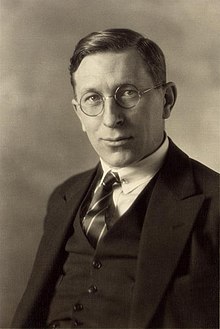
Frederick Grant Banting
Frederick Grant Banting: The Legacy of a Pioneer in Diabetes Treatment
Frederick Grant Banting, born on November 14, 1891, in Alliston, Ontario, Canada, stands as a revered figure in medical history for his transformative work on diabetes treatment. The youngest of five children born to William Thompson Banting and Margaret Grant Banting, he initially pursued studies in divinity before transitioning to medicine at the University of Toronto, where he graduated in 1916. His journey from rural Canada to becoming a Nobel laureate is marked by perseverance, innovation, and a profound humanitarian spirit.
From Battlefield to Laboratory
During World War I, Banting served as a medical officer in the Canadian Army, displaying valor at the Battle of Cambrai in 1918, where he sustained injuries and was awarded the Military Cross for heroism. Returning to civilian life, Banting completed his surgical training, yet his career took a pivotal turn while preparing a lecture on carbohydrate metabolism, which sparked his interest in diabetes—a devastating disease with no effective treatment at the time.
The Discovery of Insulin: A Landmark in Medicine
Intrigued by diabetes, Banting hypothesized that the pancreas secreted a hormone capable of regulating blood sugar levels. His hypothesis led him to the University of Toronto, where he collaborated with Professor J.J.R. Macleod. Alongside Charles Best, a medical student who assisted in his experiments, Banting focused on isolating this elusive hormone.
In 1921, Banting and Best successfully isolated insulin using pancreatic extracts tested on experimental dogs. The first human test occurred in January 1922 when Leonard Thompson, a young diabetic patient, received insulin. This groundbreaking treatment brought Thompson’s blood sugar levels down, demonstrating insulin’s potential to manage diabetes. Following this success, Eli Lilly and Company began large-scale production of insulin in 1923, providing hope for millions of diabetics worldwide.
Banting’s revolutionary discovery was recognized that same year with the Nobel Prize in Physiology or Medicine, shared with Macleod. In a testament to his collaborative spirit, Banting shared his prize money with Charles Best, acknowledging his essential contributions to their research.
Personal Life and Interests Beyond Medicine
In 1924, Banting married Marion Robertson, with whom he had one son, William Banting. After their divorce in 1932, he remarried Henrietta Ball in 1939. Beyond his medical career, Banting was an avid painter, and he participated in an Arctic expedition in 1927, which fueled his passion for exploration and discovery. His commitment to service extended into World War II, where he conducted research on aviation medicine.
Honored and Remembered: A National Hero
Banting’s contributions were celebrated extensively during his lifetime. He was knighted by King George V in 1934, and numerous institutions, including the Banting Institute in Toronto, have been named in his honor. Tragically, his life was cut short in a plane crash in Newfoundland on February 21, 1941. However, his legacy endures, particularly through World Diabetes Day on his birthday, November 14, celebrated globally.
A Lasting Impact on Medical Research and Diabetes Treatment
Banting’s discovery of insulin transformed diabetes from a fatal disease to a manageable condition, significantly enhancing the life expectancy and quality of life for patients. His work inspired countless researchers and continues to serve as a foundation for advancements in diabetes treatment. Today, the Banting House National Historic Site of Canada in London, Ontario, stands as a testament to his legacy, preserving his contributions for future generations.
Frederick Banting remains a global icon in medicine, honored through numerous statues, memorials, and ongoing celebrations of his contributions. His innovative thinking, dedication to ethical medical research, and humanitarian efforts reflect his enduring influence. His journey from a small town in Ontario to the global stage illustrates the power of determination and a commitment to improving human health.
